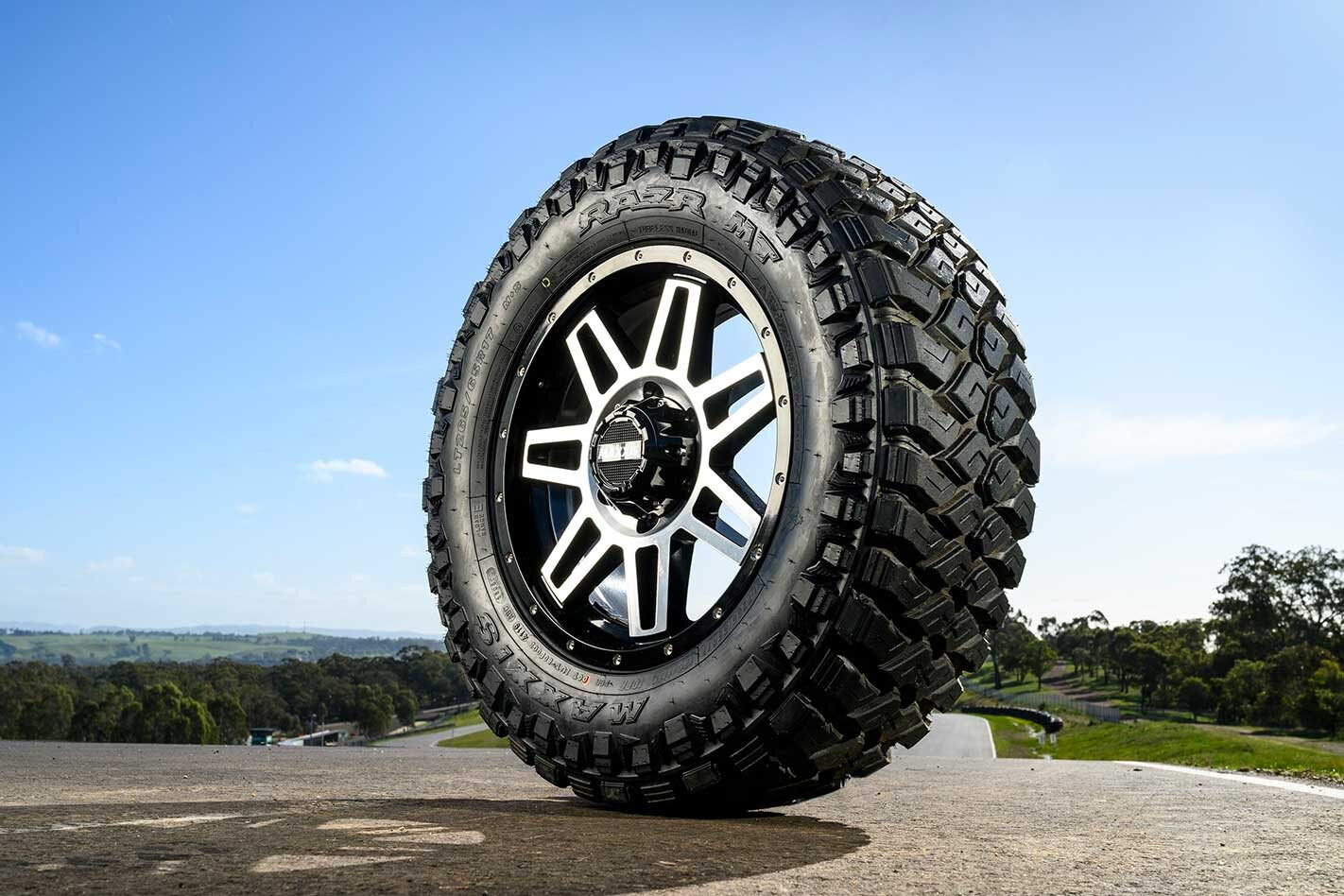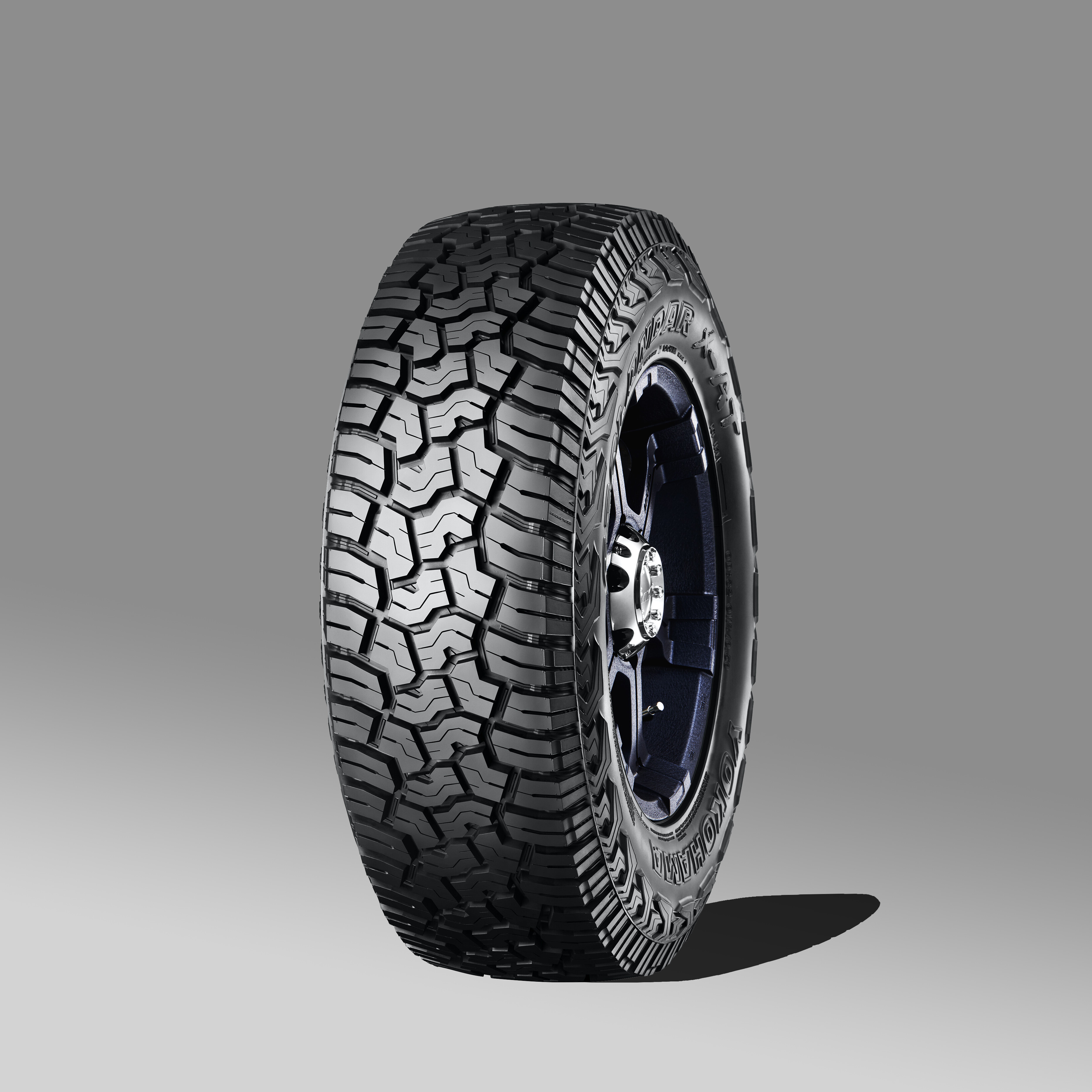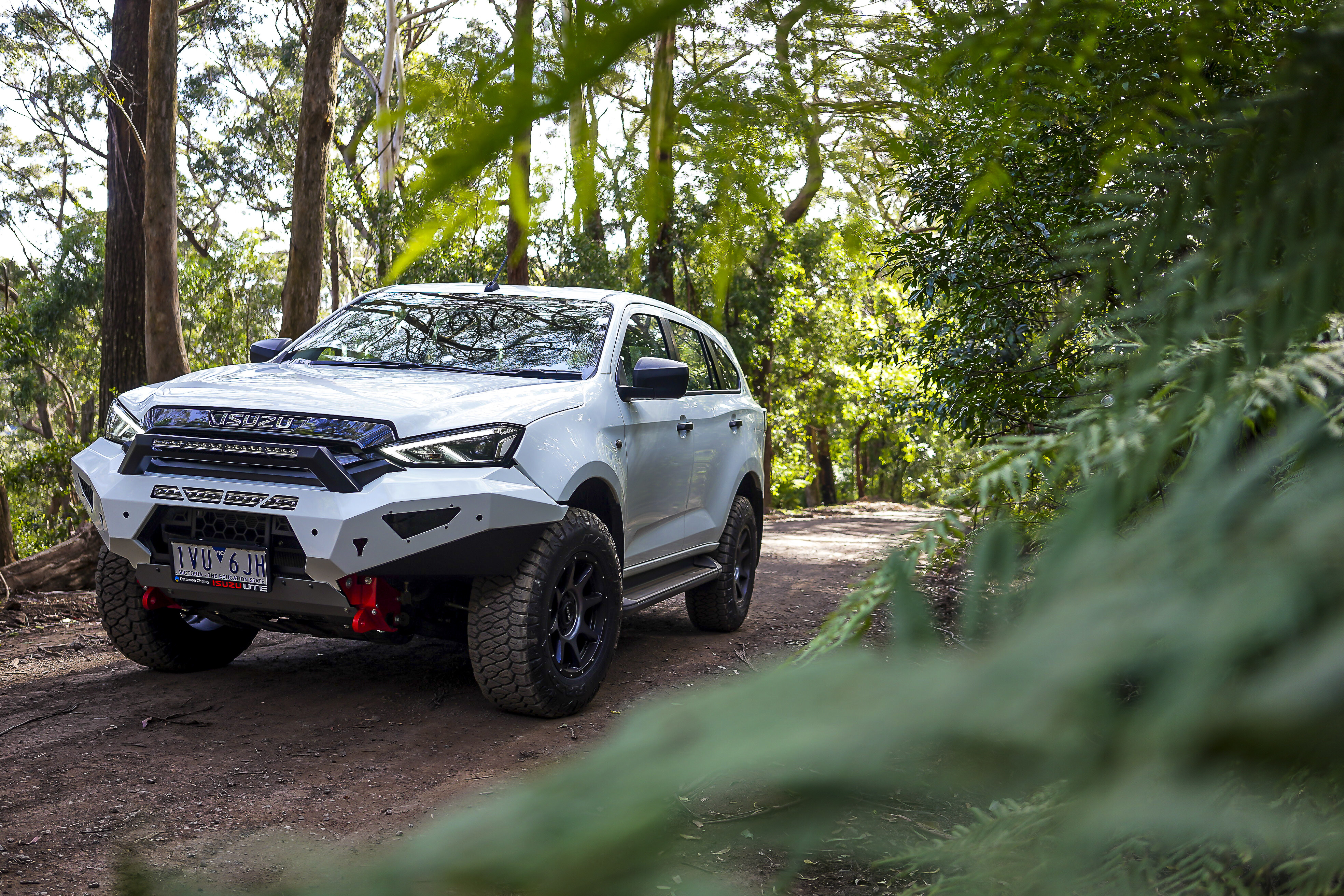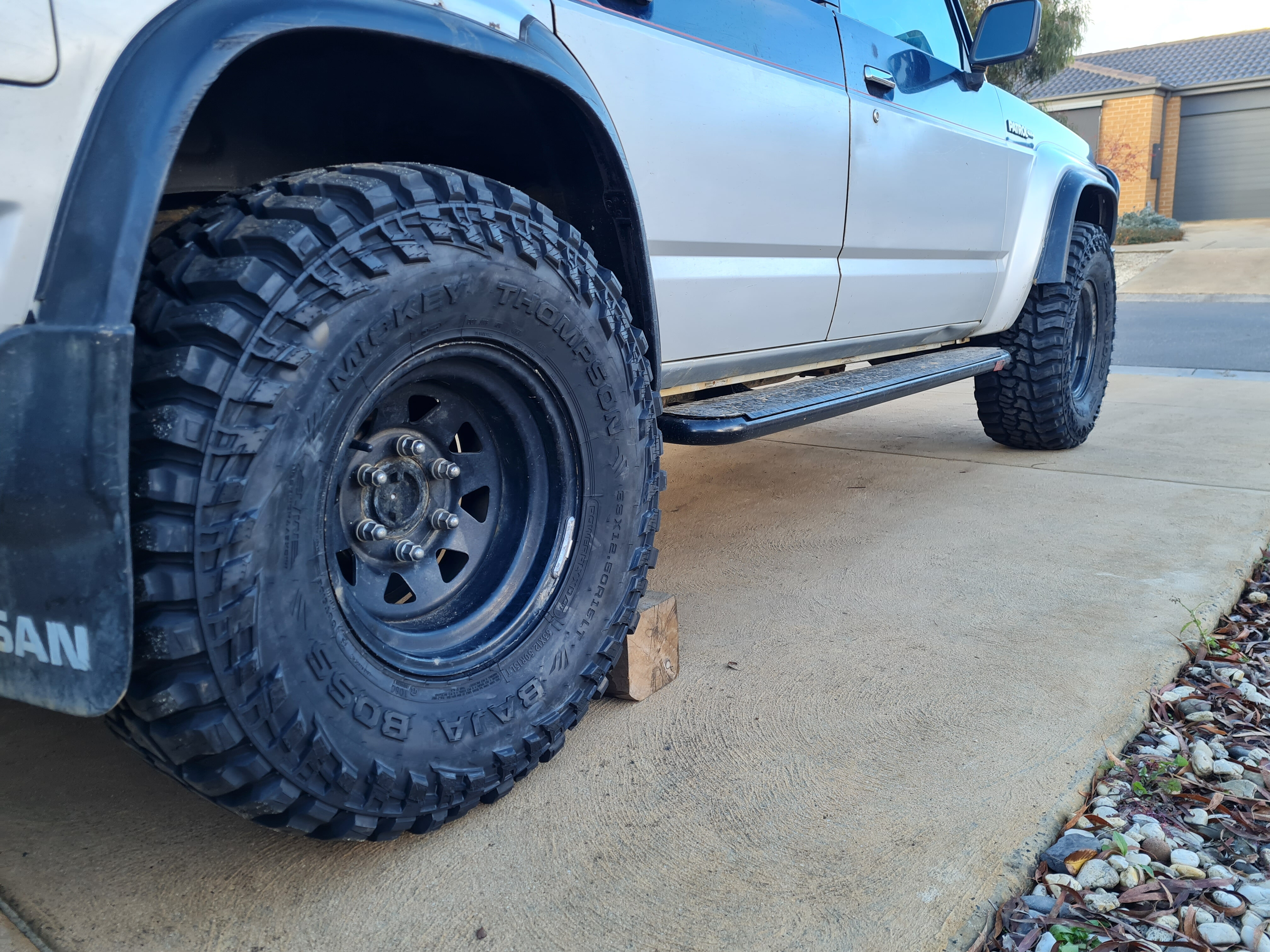YOU wouldn’t wear a pair of thongs to go bushwalking, nor would you wear hiking boots to the beach.
The same principle applies to 4×4 footwear, with off-road tyres specifically manufactured and constructed for an assortment of lifestyles, from long-distance touring to serious mud- and rock-crawling, and everything in between.
Installing a tyre that’s not fit-for-purpose increases the risk of damage, puncture and, quite simply, a loss of traction, so it’s important to attach appropriate rubber to each corner of your 4×4 – in fact, it should be one of your first aftermarket purchases as soon as your shiny new 4×4 departs the showroom floor.
“Good off-road tyres for your 4×4 are essential, and ensuring they are fit for purpose for your driving adventure is the key,” said Dean McCormack, product portfolio specialist at Goodyear and Dunlop Tyres.
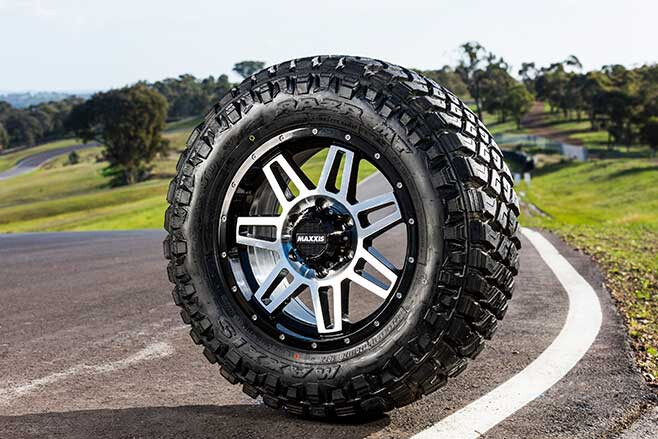
Simply put, 4×4 tyres can be broken down into categories – Mud Terrain (M/T), All Terrain (A/T) and Highway Terrain (H/T), and there’s also Light Truck (L/T) construction – each with its own strengths and compromises, depending on the kind of off-roading you have in mind.
So before you venture down to your local tyre centre to swipe the credit card for a brand-spanking set of new rubber, it’s important to establish what your intended purpose is and what type of tyre suits that purpose. Once that’s settled, you’ll be able to find a tyre that will suit the kind of exploration you have in mind.
Jeff Moorhead, project manager at Maxxis Tyres, explained to us that there are three essential questions someone must ask themselves before they contact a tyre retailer: “How often do I realistically go off the bitumen? What is the duration of the trip ‘off the road’? And how severe are the conditions I will encounter when I do go off-road?”
For example, a tyre with a wider block design with angled centre tread blocks is recommended for dry, sandy conditions; while wider grooves with self-cleaning shoulders and a more aggressive tread pattern will suit those in wetter climates.
“Hopefully after the owner has honestly considered the real use of the vehicle, the tyre selection gets a bit easier,” Moorhead added.
Let’s take a closer look at the types of off-road rubber on the market.
HIGHWAY-TERRAIN TYRES
HIGHWAY tyres typically have tread patterns similar to those on passenger cars, and they prefer bitumen to dirt and are developed more with a bias toward on-road comfort and ride quality – you’ll find them on most showroom-stock 4x4s. They are capable of occasional (light) off-road work (they’re not too bad on firm sand), but you’ll need to look elsewhere if you intend on tackling more serious tracks.
H/T tyres will have less space between the tread blocks, more siping to improve traction, and a reinforcing overlay between the steel belts to improve ride comfort. It’s all about low noise and improved wear life and ride comfort. They won’t, however, provide the levels of puncture resistance and traction afforded by A/T and M/T tyres.
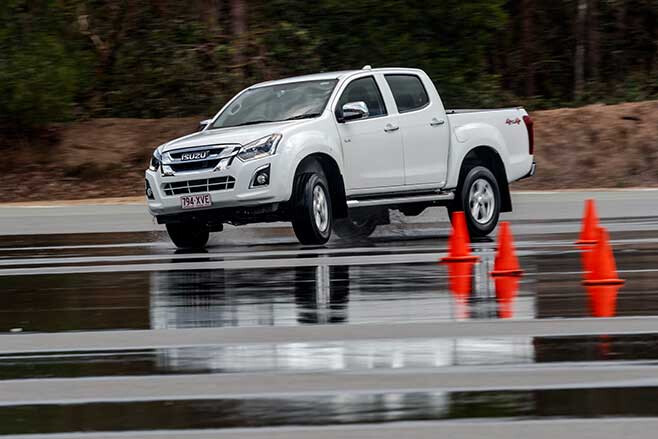
“HT tyres have good on-road handling, steering response, wet handling, braking, low noise generation and reasonable ride quality,” said Jeff Moorhead. “But they still offer some level of gravel road handling … (they’re) probably more aimed at high-speed, ‘formed’ gravel roads.”
In saying that, there is a place for the H/T tyre for a certain type of four-wheeler, as Remy Abonneau, product marketing and account manager at Continental Tyres Australia, explained: “I would advise any driver who spends the majority of their time on-road but enjoys an occasional off-road adventure to invest in a good set of highway tyres with off-road capability … usually called a 70 per cent on-road and 30 per cent off-road.
“These tyres ensure excellent wet and dry braking performance, high on-road safety and grip, and a comfortable and quiet ride when on the city streets and highways, but still provide enough grip to go on a soft dirt road,” he added.
ALL-TERRAIN TYRES
IF you’re looking for an all-rounder that offers the best balance for on- and off-road driving, then look no further than the All-Terrain. They’re often stronger in their construction than a Highway Terrain – they’ll deal better with rocks and ruts – and they also have a more open tread pattern.
They mightn’t be as quiet or comfortable as a H/T tyre, or as rugged and durable as a muddie, but they dabble a bit in column A and a bit more in column B. A quality A/T offers excellent capabilities for both outback trips and rock-crawling jaunts, and they’ll still have enough chops to keep things comfortable on tarmac.
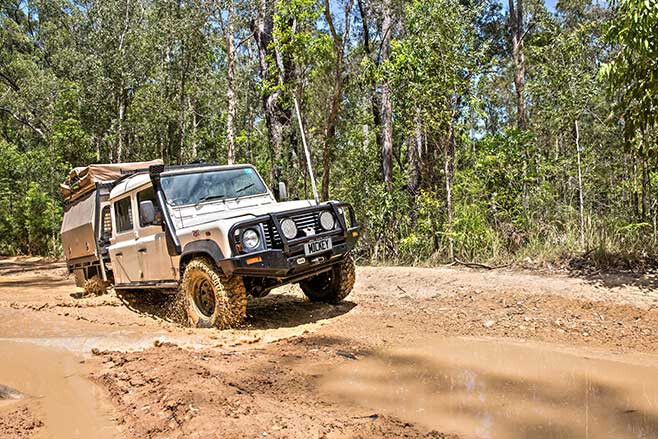
To maintain this balance between on- and off-road capabilities, an A/T should feature a deep, balanced tread pattern to deliver acceptable levels of safety and grip on a much wider array of surfaces. Something that is difficult to achieve, as Jeff Moorhead explained.
“Tyres designed for use off-road need thicker construction, deeper tread depth and wider channels in the tread to deal with the cuts, impacts, dirt, mud, stones and general rigors of off-road driving,” said Jeff Moorhead. “This thicker construction is not ideal for some on-road and general handling type properties.
“Thicker construction increases rolling resistance and reduces fuel economy, generally causes a harsher ride, and possibly reduced wet on-road performance. The deeper tread depth will negatively affect the way a tyre stops and turns because all of that tread rubber has a tendency to bend or fold under high stress. And there is an increase in unsprung weight,” Moorhead added.
MUD-TERRAIN TYRES
YOU’LL hear a muddie coming down the road before you see it, with an obvious compromise for increased bushability being its excessive on-road noise caused by its deep, blocky tread pattern and strong construction.
They’re designed to find grip when all hope seems lost, achieved by the implementation of clever design techniques. The open tread pattern, for example, is designed to dig for traction in loose surfaces while at the same time self-clean while the tyres rotate. The tyre’s heavy-duty construction and additional sidewall protection also prevents punctures, especially when a tyre’s exposure to potential piercing is increased by lowering tyre pressures.
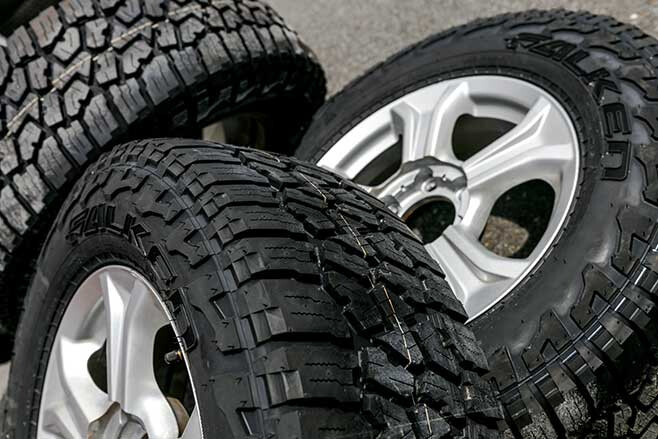
In addition to unsettling NVH (Noise, Vibration and Harshness) levels, a muddie also feels harsh to drive day-to-day, with the drone of fat rubber becoming onerous over time. Ideally, if budget permits, have a set of muddies stored in the shed for the weekend away.
Despite the increased noise and vibration levels and sub-par on-road performance, Jeff Moorhead said that M/T tyres are improving in that area.
“Our Maxxis Razr MT is reasonably quiet for an M/T and retains good on-road performance,” he said. “M/T tyre construction is not so different to A/T construction – just more extreme. Thicker construction of the tyre carcass, deeper tread depth and wider channels in the tread design all for the same reasons as for A/T tyres, but with more of a skew towards off and harsh off-road use. And, again, these increases in thickness that help in off-road conditions have the same effects on on-road performance, but to a larger extent.”
LIGHT TRUCK AND PASSENGER CONSTRUCTION
AN L/T designation stamped on the side of a tyre means it’s a Light Truck tyre built stronger to both carry more load and be more durable. L/T tyres have a more aggressive tread pattern, provide increased sidewall protection, improve traction, and are more cut-and-chip resistant than Passenger tyres.
“A Light Truck construction tyre will generally be a bit more robust, have more ply layers in the sidewall and are known to be more resistant to punctures,” said Dean McCormack. “However due to recent advancements in tyre technologies, this is now less of a concern to require LT construction tyres.”
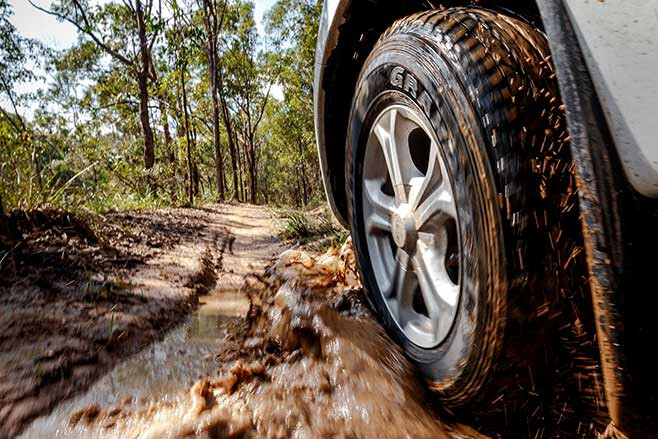
With 4x4s continuing to become bigger and heavier from the showroom floor, and most of us loading a 4×4 with a smorgasbord of aftermarket equipment – bar work, fridges, tents, etc. – it’s also more appropriate than ever to opt for an L/T tyre to cope with the extra heft.
“Buying a tyre that is of Light Truck construction ensures you have the best possible protection off-road. They will handle heavier weights especially for towing, and you can also run lower pressures in off-road conditions,” said Jeff Newick, National Technical Manager at Exclusive Tyres.
Still, there is a place for the Passenger tyre, recommended for those who travel light and aren’t prone to serious bush-bashing or remote-area travel. Despite the lower load ratings and limited puncture protection, the tyres are lighter, more flexible and provide better ride quality and fuel economy. They also bag-out better, perfect for that sand excursion.
WHAT TO LOOK FOR
IF it’s your first foray into the world of off-road tyres, the number of options and variations can seem overwhelming. However, there’s a simple trick to make the process a bit easier. When comparing tyres, remember the TCC: Tread Design, Carcass Construction and Compound, as it’s across these three areas where tyres will differ.
“The biggest compromise between tyre brands and patterns is tread design, carcass construction and compounding. You need to research and ensure all these match what you want to do and where you want to go,” said Jeff Newick.
For improved traction and further protection, important features of modern tread designs to look for when browsing for new tyres include flex grooves, mud scoops, release dimples and raised rubber ribs. There are also clever innovations, such as Micro Gauge Sipes, which are simply tiny cuts in tyres designed to suck water up and release on highways to prevent aquaplaning. Brands that don’t use Micro Gauge Sipes tend to cut and chip more as they provide a leading edge to ‘rip’ on rocks and stone.

In regards to tyre carcass, consider the tyre’s tensile strength and whether it’s equipped with ‘angle ply’ technology. Also look at the construction of a tyre’s sidewall – whether it has sidewall biters and extra protection against obstacles (especially when aired down).
When asked what tyres to recommend for different driving conditions, Remy Abonneau said there are plenty of things to keep in mind.
“Driving purely on highway, I advise to keep your highway tyre to ensure a high level of comfort and best handling/braking performances in all conditions,” he said.
“If most of your drive is on the highway but from time-to-time you hit soft dirt road or gravel road, the best choice is to go for 70 per cent on-road / 30 per cent off-road.
“Then if you start to hit the toughest off-road tracks weekend after weekend, you will be better off going for an all-terrain, which will have a good durability and the toughest design.
“If your adventure takes you through mud, dirt or rock, go for some mud-terrains … tougher sidewall, heavier construction and aggressive block pattern design.”
And what about those owners who prefer the look of an aggressive tyre? “It’s always crucial to understand the compromise and what type of driving you will do,” Remy added.
SPEND SMART
“THE last thing you want when you are touring or off-roading (maybe a few hours from phone service) is for something to go wrong,” warns Dean McCormack. “While it seems like a bargain at the time, in the long run, it might end up costing you dearly.”
So when it comes to something as important as tyres, always buy a trusted brand from a reputable tyre dealer as an off-road tyre – something that could make or break your next 4×4 trip – is definitely not something you want to skimp on.
“The tyre market is full of many brands these days,” added Jeff Moorhead. “Not all tyres are created equal, there are significant differences in tyre performance. Research and development is what costs money, that’s where the bottom end of the market makes its saving.”
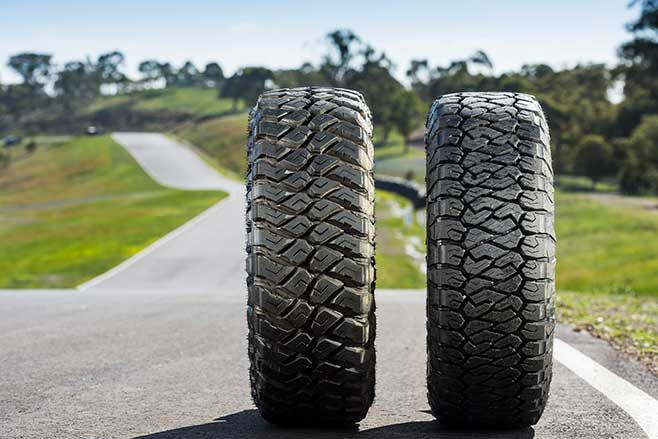
Not only will a reputable dealer be able to recommend a tyre that’ll suit your lifestyle, they’ll be there when it comes to after-sales support and service.
Saving a penny by opting for a low-cost online option also comes with a basket-full of headaches you’ll probably encounter down the track: lack of warranty; no guarantee of tyre age (tyres can sometimes sit in a warehouse for up to five years); tyres not built to cope with Australian conditions; and, of course, after-sales support.
“Tyre manufacturers like Goodyear spend tens-of-thousands of hours testing and assessing the different components of its tyres,” said Dean McCormack. “We have a dedicated engineering team located here in Australia who constantly perform testing to ensure the suitability of our tyres.” A good question to ask yourself before you click to purchase is ‘why is it so cheap?’
“There is always a reason,” said Jeff Newick. “The product could be old stock, discontinued lines and also parallel imports which do not carry warranty from genuine distributors. Most times when problems arise it is very difficult to get a claim.”
WHEN TO CHANGE TYRES
KNOWING when to hoist up your rig and change the tyres is just as important as getting the correct ones for your intended purpose.
A good sign that you’re due for a new 4×4 tyre is when the old one has worn down to the treadwear indicators (around 2mm remaining is a good time to start thinking about replacement), or they start to chip, crack or sustain any irreparable damage. Also keep an eye on the tyre’s block edges. Tyres should also be inspected regularly by your local tyre store after they get to five years of age.
“Modern day 4WD tyres will easily achieve 50,000 to 80,000km, but always be prepared to change them out prior to any big trip,” Jeff Newick said. “For example, I would not suggest heading off across the Simpson with tyres that are 50 per cent or more worn.”
WHEEL ALIGNMENT
A WHEEL alignment is recommended every six to 12 months, or every 10,000km. However, if your vehicle starts pulling to either side, get it looked at straight away. Another way to know if a wheel alignment is imminent is to see if the tread blocks have any raised edges developing – a good start is to simply run your hand across the tread face and feel for irregularities.
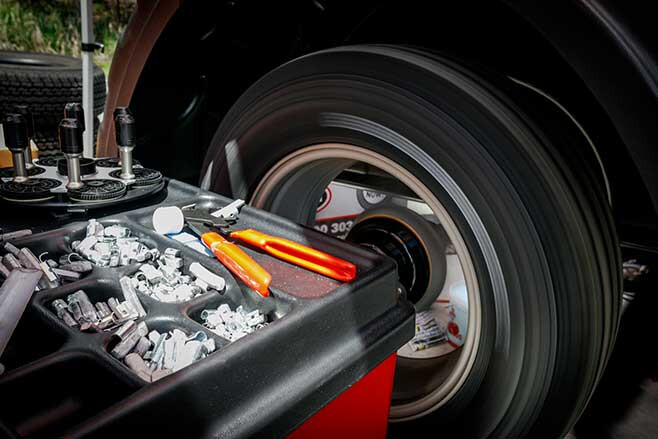
“I would recommend to get your alignment checked every six months, it only takes a pothole or a heavy hit off-road to knock it out of whack. You should also get into the habit of physically looking at your tyres each time the vehicle is washed. It is very easy to pick up any dramas quickly before too much damage is done,” said Jeff Newick.
AIR DOWN
THE optimal pressure for a tyre can broadly be categorised, but it really comes down to experience with your vehicle and its tyres. What may seem too high for someone, may be just right for someone else.
A loose rule, however, is to go between 18 to 24psi for firm sand, and down to 14/15 to 20psi for very soft sand, mud or rocky roads. You can drop the pressure further to increase a tyre’s footprint, but always keep speed to below 40km/h when aired down that low.
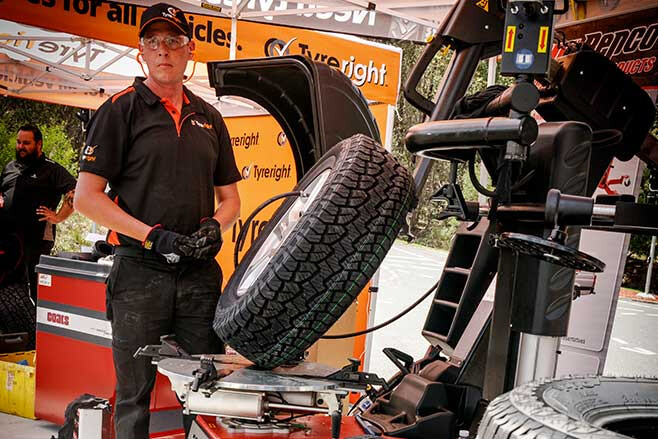
“When you are off-roading, you are constantly looking for traction. Keeping your tyres at an optimal pressure will allow you to balloon your tyres to gain the best traction,” says Dean McCormack.
“Always remember to reinflate before the cruising speed comes up,” Jeff Moorhead added. “If you don’t reinflate and run on the highway at high speed with low pressures you can and will destroy all four tyres, which is both dangerous, as they could blow out and cause an accident, and/or costly. From experience, you don’t have to go far to destroy tyres! Please remember to re-inflate.
“It’s important not to over inflate tyres – the tyre needs to be allowed to ‘deflect’ as it rolls over objects on the road. Over inflation makes the tyre much more rigid,” he said.
TYRES EXPLAINED
TYRES comes in all widths, sizes, and limits to fulfil any specific range of functions a user needs. The details of which are written out in numerical designations on your tyre sidewalls, which can be confusing. Here are what those numbers mean.
265/65R17 100T 265 = section width (in millimetres) 65 = sidewall aspect ratio (as a percentage of width) R = tyre construction (in this case, radial) 17 = rim diameter (in inches) 100 = load rating (in this case, 800kg) T = speed rating (see below, in this case, 190km/h)
SPEED AND LOAD RATINGS
Tyres are assigned a specific speed rating advising the maximum permitted speed of said tyre. For example, a 265/65R17 100T tyre has a speed rating of 190km/h. For safety reasons, it’s recommended to never exceed the max speed rating. And always double-check ratings when purchasing tyres, especially online, as they could invalidate your insurance.
| Speed Rating | u00a0Max Speed |
| N | 140km/h |
| P | 150km/h |
| Q | 160km/h |
| R | 170km/h |
| S | 180km/h |
| T | 190km/h |
| U | 200km/h |
| H | 210km/h |
| V | 240km/h |
Tyres are also assigned load ratings, which designates how much weight a tyre is designed to carry when operating at its maximum speed rating and inflated to maximum pressure, as the tyre’s load carrying capacity will decrease with reductions in pressure. For example, a 265/65R17 100T has a load rating of 100, which translates to a maximum permissible load of 800kg. Remember, it’s illegal to install tyres with a lower load index than the vehicle manufacturer’s original tyre.
| Index Number | u00a0Max permissable load |
| 60 | 250kg |
| 70 | 335kg |
| 80 | 450kg |
| 90 | 600kg |
| 100 | 800kg |
| 110 | 1060kg |
| 120 | 1400kg |
| 130 | 1900kg |
“All tyres come with a load-rating index and a speed-rating index,” said 4X4 Australia’s Fraser Stronach. “What’s important here is that the load rating has to be matched or bettered when replacing an Original Equipment Manufacturer (OEM) tyre while the speed rating can be lower than the OEM tyre. Laws regarding fitting replacement tyres with a lower speed rating vary state by state.
“Although it may seem counter intuitive, tyres with higher speed ratings have thinner sidewalls, which help limit heat build-up when high speeds are maintained over long periods of time. Unfortunately, thin sidewalls are also more prone to being torn open by anything sharp. As a general rule, anything from a H-rated tyre up won’t survive long off-road. Speed ratings down to ‘N’ are generally permissible when replacing the OEM tyres.”
ADVICE FROM A TYRE DEALER
OUR local tyre store is Competition Tyres & More at Murrumbeena, Victoria, and the team there has fitted rubber to a few of our projects in the past. The store also fits 4×4 accessories, so they get a lot of 4×4 traffic though there and specialise in 4×4 tyres.
We asked store manager Borey Ouk what he asks customers, to help them chose the right 4×4 rubber. “When a customer comes in and says he wants 4×4 tyres for his vehicle, I start with the make and model, and whether the vehicle has been raised,” Borey told us. “This will determine the biggest size we can legally put on, and then I ask what type of driving they will do and what percentage off- and on-road, as noise plays a big factor for many customers.
“Customers generally will have a brand preference and ask for any feedback we’ve had, or of customers I know who ran that particular tyre.
“Some customers want the biggest, most aggressive-looking tyres regardless of their intended use. However with vehicle restraints and what can fit, I try and point the customer in the right direction as we like to keep it legal for the safety of the owner and others as well as insurance purposes.
“(Most customers prioritise) construction, speed and load, as well as ply rating if using for mainly off-road. (Also) price, and we try and find a budget to suit all customers’ needs.”


